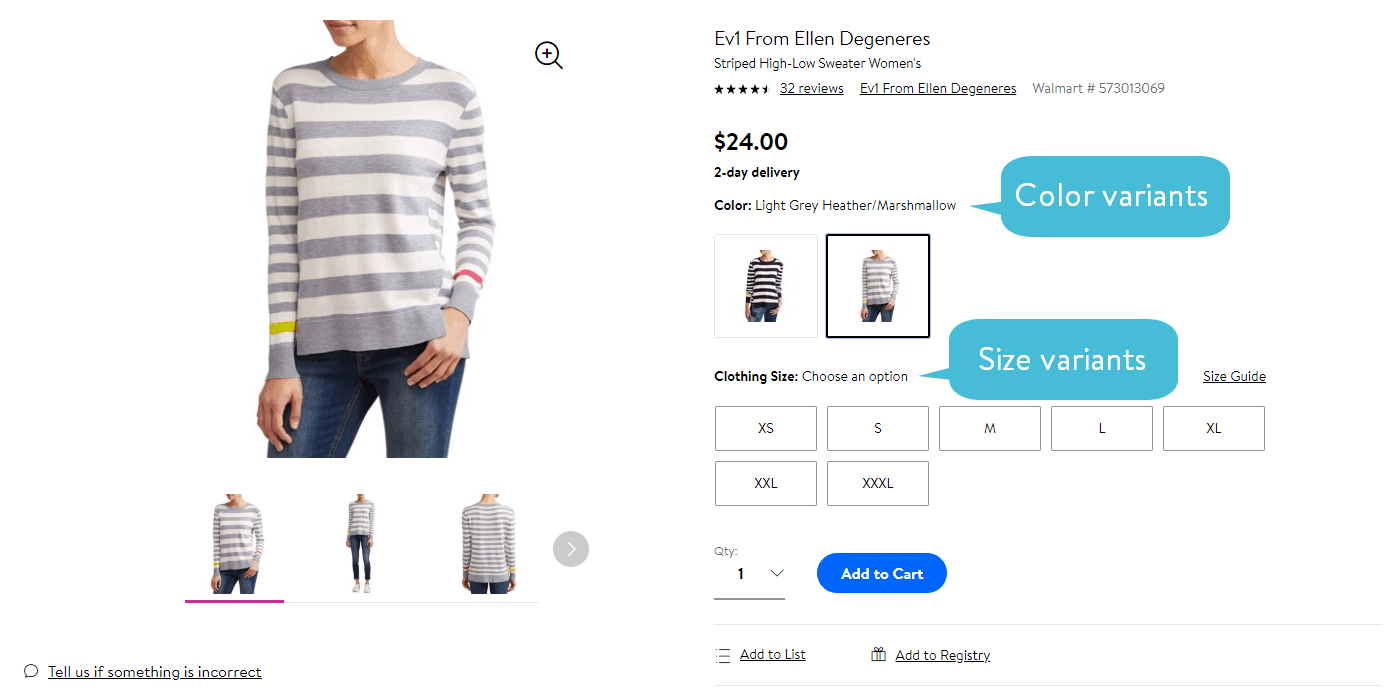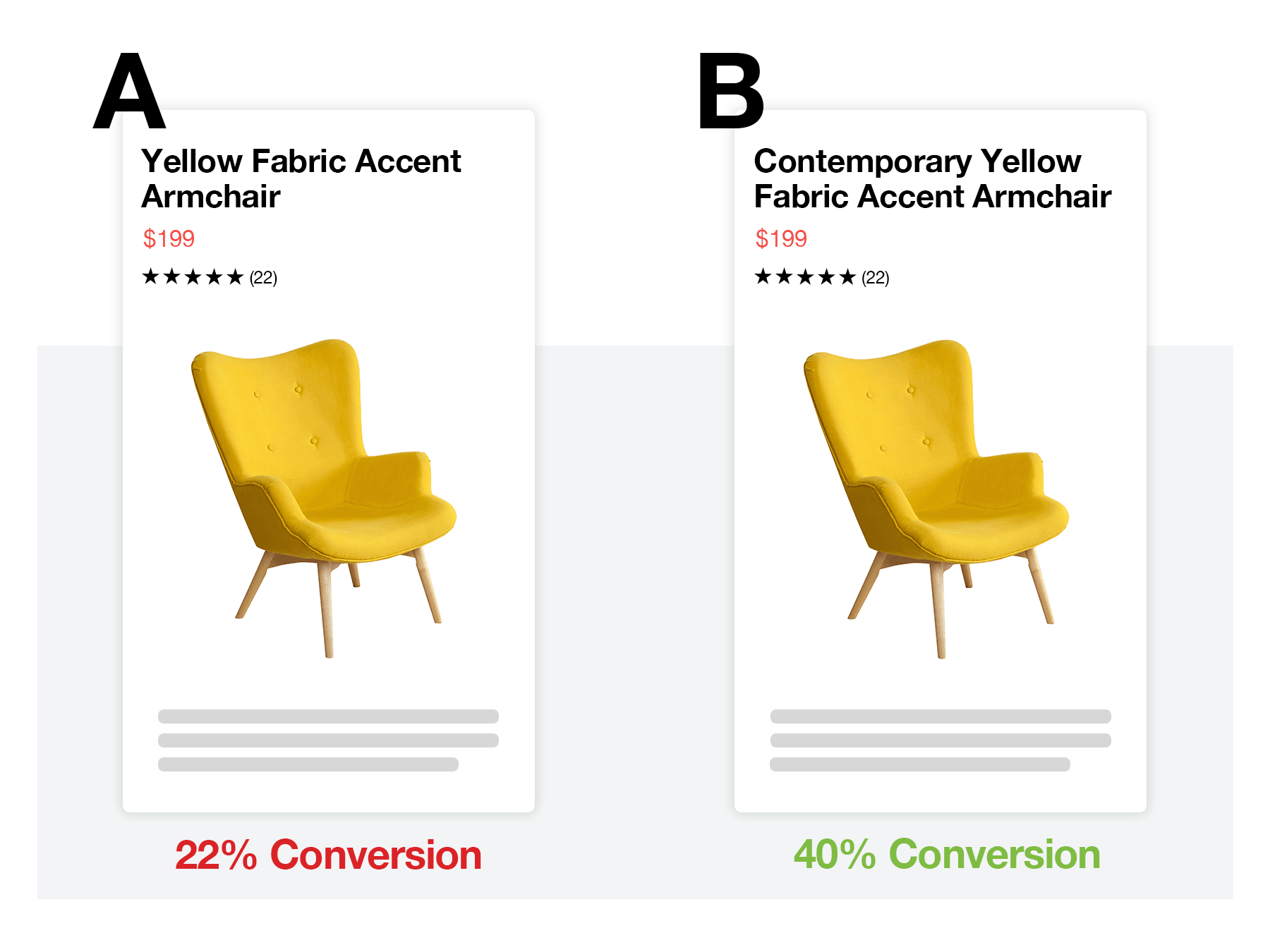Insights from Feedonomics in the Provider Spotlight
Feedonomics is a full-service solution provider offering a feed optimization platform that optimizes product data. In our Provider Spotlight this month, they offer product feed tips to help you win the buy box and sell more on Walmart Marketplace. Need to become a Walmart seller first? Get started by applying today!
Stand out from the crowd

With over 110 million consumers shopping at Walmart.com every month, sellers can greatly expand their reach by offering their products on Walmart Marketplace. However, competing with other sellers offering similar products can be tricky. For a general search like “blue men’s shoes,” your product may be competing among numerous brands and resellers. Even the smallest optimization to your product listing might just be the influencing factor that leads to your product selling.
Given the number of shoppers visiting Walmart.com, you might see decent sales without ranking well within the site’s search results. But how can you know where you rank? More importantly, what can you gain by making changes that improve your rankings?
There are several ways that having an optimized feed can maximize your online sales and minimize your risk. Let’s go through each one in detail.
Feed optimization basics
Titles
The most important thing you can do is make sure that your product titles contain as many of the attributes used to trigger your ads as possible – including brand, name, size, and color. When shoppers include the attributes of “color” and “size” in their search, it is a very strong indicator of intent to purchase. If the search is more general, like “blue running shoes for men,” then your price, image, and call-to-action wording in the description will be crucial.

Images
They say that “a picture is worth a thousand words,” and this is evident in the world where our social media platforms are dominated by the very visual Instagram, Facebook, and Snapchat. Even our dating apps are focused around the way we arrange and display our photos. Your products need to look good. Every image needs to tell a story, and image quality must be excellent while keeping your image files as small as possible.
Tip: Always use a white background to make your images pop, and make sure to use the optimal height and width for the platform where you’re advertising. For example, Walmart has specific image size requirements for the fashion category.
Advanced feed optimization
With the basics taken care of, you’re ready to focus on two areas critical for advanced feed optimization: categorization and key features.
Categorization
Walmart assigns products to specific categories, and within each category, there are sub-categories. Additionally, attributes for products are required. You should ensure that product categories, sub-categories, and required attributes are set up correctly so there are no errors or unpublishing issues. Customers who browse or use filters when shopping won’t be able to find your products if you’ve miscategorized them.
Key features
Although listing key features is not required, we advise including and optimizing them to offer the best shopping experience for customers. At Feedonomics, we can optimize these by parsing the data, increasing the odds that your shoppers will buy your products.
Additionally, if you have products with variations (i.e. sizes and colors in apparel), then you’ll need to set up your products so that variations are grouped into one listing under a product group ID.

Best practices for winning the buy box
Did you know that 80% of sales on Walmart.com happen through the buy box? The main factor in achieving this prime real estate is having a competitive price point, but there are other variables at play as well, including product availability, having a quick turnaround time for order fulfillment, and low or free shipping.

As a retailer, it’s critical that you ensure your product never runs out of stock. That may sound easy enough, but when you sell on multiple channels, it’s easy to over-sell. Let’s say that you only have one Ninja Single Serve Blender left in stock, but you sell two blenders—one on your website and another on Walmart. One of those customers is going to be unhappy, and your performance scorecard will take a hit. There are two potential solutions to this problem:
- Implement shorter time-lags between polling Walmart for orders and submitting tracking numbers.
- Distribute product inventory across multiple channels with rules.
An intelligent feed management platform can eliminate these headaches and minimize mistakes that can cause a loss in revenue or affect your chances of winning the buy box. Having a fully optimized product feed allows you to have a dynamic file that automatically updates every 15 minutes and pushes out to the Walmart platform. You are in control and can choose the frequency to update your product feeds – once a day, every hour, or whatever user-defined schedule you’d prefer.
A word about split-testing
How can you improve your product feed after it has already been optimized? Conduct A/B tests with different titles by adding new keywords to see if performance improves. You can split-test any attribute that you have access to (i.e. titles and images) to see which will perform best.

Example
One of our clients used our keyword recommendation tool, which automatically compares your optimized feed with actual converted search terms, to improve their results. The tool allows you to see what keywords are missing from your titles and make adjustments. Ultimately, our client saw an improvement in performance because now their product titles are more aligned to how users are searching for them on the Internet.
The overall result: impression share skyrocketed by over 200% with a 117% increase in revenue. Impressions went up and cost-per-click (CPC) dropped because keyword relevancy increased, and revenue increased dramatically.

The overall result: impression share skyrocketed by over 200% with a 117% increase in revenue.
Minimize your risk with data governance
When you are managing hundreds, thousands or even millions of product listings, it’s critical to have a system in place to manage quality control of that data. This is where data governance comes into play.
Creating marketing campaigns requires having accurate and reliable data at your fingertips. What happens when new products are added to your product feed or price changes occur overnight? Automatic alert emails can save the day. With an intelligent feed management platform, you can set rules and create thresholds around the data to minimize risk.
With the Feedonomics platform, you can set alerts so that you’re notified of any errors or unpublishing issues as they occur—so you can make corrections immediately without delaying your feeds and losing sales.
Data governance allows you to define queries that can send alerts and even prevent exports from going out under any condition you can describe. When you have the tools you need to establish rules around your data, you minimize risk.
Common trigger events for custom rules

New products are added and aren’t optimized

Products aren’t categorized

Products are missing critical attributes

Any custom condition in your feed
Putting it all together
By implementing these feed optimization strategies, you have a greater chance of increasing your online sales.
Need additional guidance? Feedonomics is an approved Walmart solution provider and can help with product feed optimization and automated order management. Contact us to get started.


Provider Spotlight
This is a guest post from Brian Roizen, Cofounder and Chief Architect of Feedonomics, a full-service feed optimization platform that optimizes product data for hundreds of channels. He has been featured on numerous podcasts and webinars and regularly contributes to Search Engine Land and other industry-leading blogs. Brian graduated summa cum laude from UCLA with both a bachelor’s and master’s degree in Mechanical Engineering.
